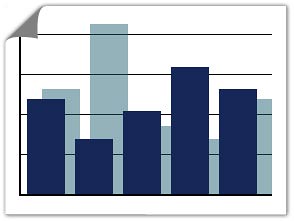
I've always wondered why Metro is so jerky, especially when pulling into a station or stopping/restarting repeatedly in a tunnel. I'd never experienced this on any other subway system.
In addition to being uncomfortable, the jerkiness in the stations is a huge impediment to the quick egress/ingress of passengers from the trains, as a lot of people tend to want to stay seated or holding on as long as possible, knowing there will be some bucking as the train pulls in.
I got a tip more than a year ago that the major reason for this was the cars, 1000-series, 2000-series, etc., all have different braking and accelerating properties. Some brake harder, some speed up faster. The source said the cars were never meant to be mixed.
We asked Metro then if it was true only to be told it wasn't.
Their reason: It is a common, unfounded operator gripe. Nothing else.
I've talked to numerous Metro sources, operators and others, over the course of months about this, and they all told me the cars do have different braking and accelerating properties. This, they all said, leads to an "accordion" effect with cars bouncing back and forth as some slow or accelerate more quickly than others.
For example, several sources said, the 5000-series brake particularly hard, so a different series car behind a 5000 will likely bump the 5000 as the train slows.
Next time you're on a jerky train, you can really sense how the cars interact with one another when slowing down or speeding up. They're certainly not moving in unison.
One source said mixing the various series of cars was not a safety issue, but that because of all the bouncing, it does lead to greater wear and tear on the couplers that connect the cars.
On the bright side, the new 7000-can't be mixed--because they won't couple--with any of the other Metro cars, so jerking shouldn't be a problem with them. The downside? 7000-series trains can only be rescued by 7000-series trains. That could prove interesting.
Another reason for jerky rides, I'm told, is that there has been an influx of new operators in the past several months. They're simply not as good as veterans. For example, many experienced operators can compensate for the differing braking/propulsion properties, said a source, but the younger ones don't know how.
The last reason for the whiplash experience is that Metro management frequently sends out "hit squads" or "jump out guys" to make sure the operators are pulling up to the end of the platforms. These teams stand near the front of the platform, often disguised in "Hawaiian shirts" said one Metro source who is not an operator.
If an operator pulls too short or long of the mark, even by an insignificant amount, the hit teams will basically storm the operator's cabin and "ding" the operator, which could result in suspension, said a source. The source said that even with an 8-car train, there's about a 10-foot margin of error.
Because of this, operators inch up and up until they're within the limit, even if there's no danger of opening a door still in the tunnel, as source said.
Not only does this cause jerky rides, but it also eats away at dwell time--the amount of time the train stays at a station.
We asked Matt Bassett of the Tri-State Oversight Committee (TOC) about this issue:
If a train operator pulls too far ahead, or not far enough, he or she runs the risk of opening the train doors outside the platform. This exposes patrons to the hazards of the rail environment; live 3rd-rail power, train wheels and electrified train components to name just a few.A Metro source--again, not an operator--disagreed and said the hit squads were a management gimmick, a waste of time, eroded morale and were nothing more than safety theater because the majority of trains are 6-cars long, and pulling to the front of the platform is next to meaningless. They added that even with an 8-car train, precision within a foot or two was unnecessary.
The "inching up" phenomenon can likely be attributed to an operator's cautious approach to the 8-car marker at the end of the platform. We're Metro riders too, and we understand the annoyance that this lurching sensation can cause our fellow passengers.
But we at the TOC still believe it's preferable to even the possibility of exposing riders to a dangerous fall to the trackbed. Careful adherence to, and enforcement of, safety rules such as this are essential to keeping the system safe.
Other items:
Metro outlines track work for entire year (WMATA)
McDonnell support federal cuts for transportation (WaPo)









 Oct. 11, 2012
Oct. 11, 2012 February 21, 2012
February 21, 2012 March 4, 2010
March 4, 2010




